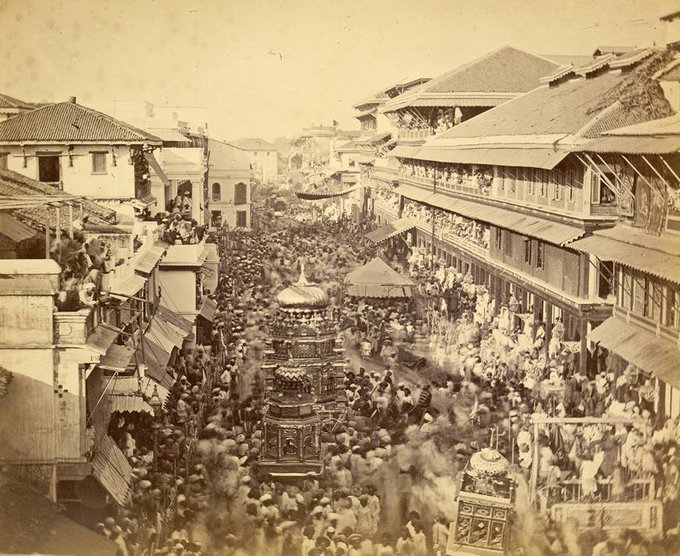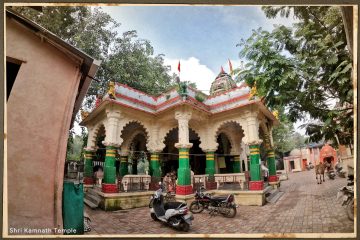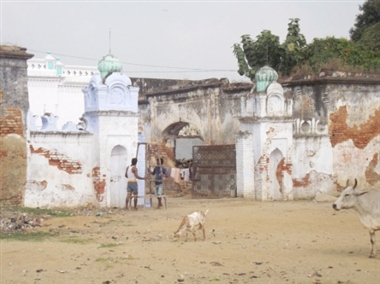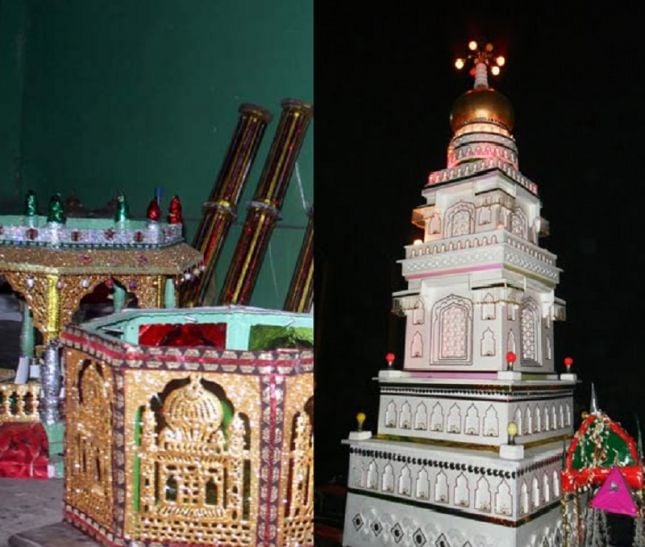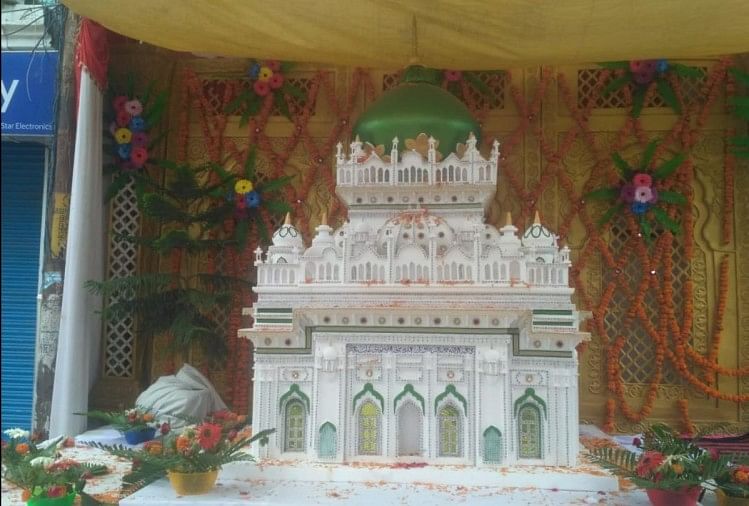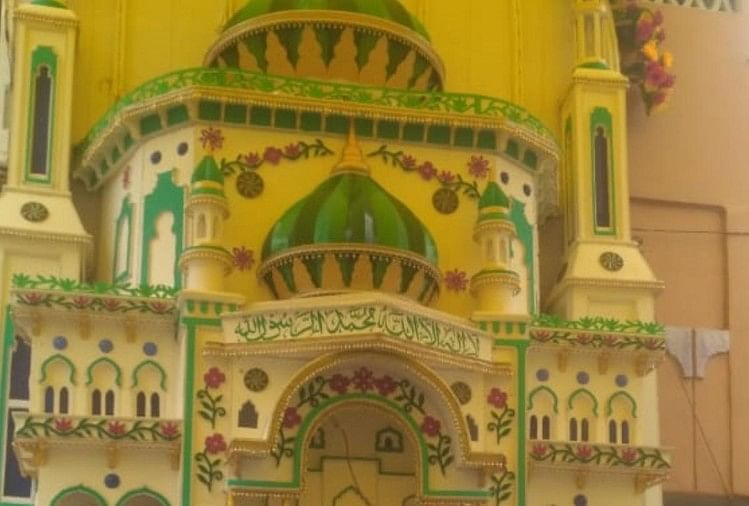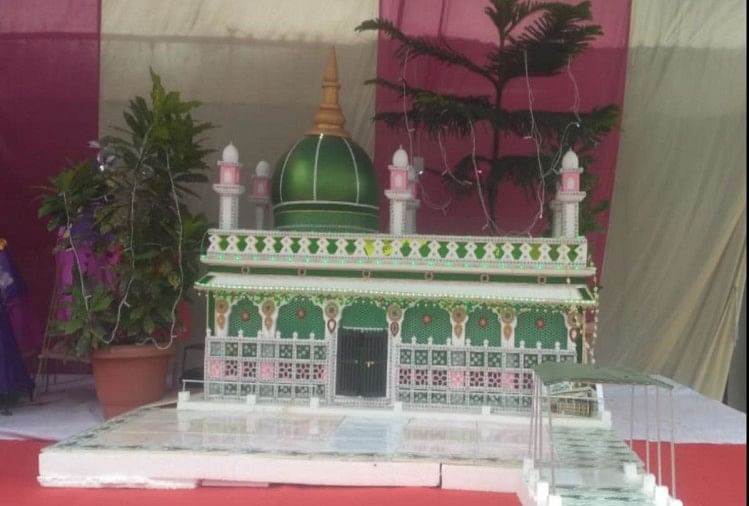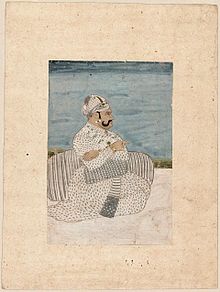Dr. Mazhar Naqvi
A look at the colonial
history of India reveals that how the Hindus used to participate in Muharram
rituals and Tazia processions in huge number before 1890.However, the British sponsored
Hindu-Muslim conflicts changed the composite culture in a span of few years. With
the advent of Lokmanya Tilak and his efforts to revive Hindu mythology, the
participation of Hindus in Muharram traditions resulted in sharp decline in
various parts of Maharashtra ,especially in Mumbai.As an outcome, Muharram remains primarily a Shia affair and Imam
Hussain who was venerated by both Hindus and Muslims alike is purely now a Shia
Imam.
It was Tilak who supported and helped organize
Shivaji festivals and Ganeshotsav after Muharram riots in Mumbai, then known as
Bombay.He also gave call to Hindus to boycott Muharram processions.The final
nail in the coffin was the decision of the commissioner of police of Bombay to
grant the license for the attendance of the procession only to Muslims. The
order banned Hindu attendance in
Muharram and offered them a cause for strengthening their internal unity. As
years went by the Ganeshotsav became an instrument of serious political revolt,
a position enjoyed by Muharram processions so far. By 1910, Muharram had become
a politically insulated religious event.
The British were aware
of the lackadaisical participation of the Muslims in independence revolution
barring few exceptions, or the fact that many of the Muslim elites were more
suspicious of Hindu dominance than British rule. They supported Muslims when a
conflict between the two communities arose against each other by the turn of 19th
century. Eventually, the ominous politics of the Muslim league and consequent
partition of India let the mourners divided considerably.
In
the events that followed in the first half of the 20th century,
it became clear that Muslims were not as keen to demand independence from
the British rule as were the Hindus. The fact is that the Muslim leadership saw
the British rule as a temporary phase that would end with the ascendancy of
Muslim rulers back to the throne. Fighting shoulder to shoulder with the
Hindus, who they considered to be their subjects, was not a particularly
appealing idea to them. It was this narrative that later crystallized into the
two nation theory resulting in the partition of India. Now, if Tilak wanted to mobilize the masses for the
purpose of attaining Swaraj, he had to necessarily work outside the duplicitous
politics of the Muslim leadership, he had no other option but to replace Tazias
with idols of Lord Ganesha .
The first of the modem public Ganapati
festival begun in Poona a week after the September meeting called to protest
the Bombay riots. Annasahib (Patwardhan) provided the inspiration, Tilak the
perspiration and publicity, leading to the conversion of Ganapati celebration
from a purely private religious function to the most important and
best-attended public festival of western India within a few years. Held in September
shortly after the Mohurrum, Hindus now marched with their communal cohorts
behind giant images of their own god, instead o f joining the procession of the
Muslims who carried Tazias to the river for their immersion. The change had many effects. It led to
bridging (increasing) gap between Brahmin and non-Brahmin communities. Although
Tilak has been widely credited for starting the public Ganapati festival, there
are some conflicting pieces o f information about his part in the start o f the
Ganapati festival. Such, information is available in a book commemorating 60
years of Ganapati festival, edited by J. S. Karandikar and in a biography of
Tilak by N. C. Kelkar. The beginning of Ganapati festival as a public event has
a significant background of the first Hindu-Muslim communal riots in the
region. It has also been said that the Ganapati festival as a public event was
started to counter the Muslims .In 1893 a meeting of leading personalities in
Pune decided that the Ganapati festival be celebrated as a public event.
Accordingly, Bhau Rangari, Ganapatrao Ghotawadekar and Nanasaheb Khasagiwale
installed Ganpati idols and started the public Ganapati festival. An immersion
procession was taken out on the day of Anantchaturdashi. A mela (cultural
troupe) of Kashinath Thakuji Jadhav was a part of the procession. Lokmanya Bal Ganagadhar Tilak appreciated this idea and he
wrote an article in support of this public Ganapati festival and the
procession. It is said Tilak is not
mentioned among those present in the meeting. Saradar Krishanaji Kashinath
alias Nanasaheb Khasagiwale took initiative in celebrating Ganesha festival as
a public festival. He had gone to Gwalior in 1892, where he saw that the
Ganapati festival (Ganapati Utsav was celebrated as a public festival, with
royal grandeur. He took cue from his observations in Gwalior and proposed the
idea of Ganapati festival at public level The idea was proposed in 1893 and the
festival was celebrated at three places as a public festival. Thus the
tradition of Public Ganesh Festival was begun in Pune. The idea of celebrating
the Ganapati festival attracted people immediately.
In 1894, the number of public Ganapatis installed increased substantially. Next year, the festival was celebrated with
more fanfare
Meanwhile, the movement of boycotting Muharram
gained momentum. Hindu masses almost withdrew from the Muslim festival and they
began striving to make popular the Ganapati festival. The relationship between
the Hindu and Muslim communities with respect to the Ganapati festival as well
as the question whether the Ganapati festival was an attempt to retaliate
against ‘Muslim aggression' are worth considering. The Hindu leaders in Pune
appealed to people that they should not participate in the festivals o of
Muslims as they used to be. In those times, about ninety percent Taziaz and
Coffins belonged to Hindu. The Hindu leaders raised a question, why should
Hindus install these Tazias? If people are so much interested in celebration,
then they should stop installing Taziass and celebrate Ganapati festival. This
is a way of retaliation. Due to this guidance, at many places old tradition of
installing Tabuts was stopped. In 1894 in Pune, the number of Tabuts by Muslims
increased from forty to sixty and Tabuts o f Hindus were only 25 instead of one
hundred.Although the festival was not started to tease the Muslims, the
intention was to unite the Hindu community with respect to the Hindu versus
Muslim conflict and to teach the Hindu community, how to establish their rights
without getting afraid of the Muslims.
Cashman has opined that in 1894,
Ganapati festival was promoted as a counterpart to the Muharram procession. By
copying certain aspects of the Muharram and by urging Hindus to boycott the
Muslim festival, the organizers hoped to wean away those Hindu artisans,
musicians, and dancers who had freely participated in the Muharram in previous
years.Even in a book regarding the Rashtriya Swayamsevak Sangh it is said, “It
is well known, for instance that the myth of medieval ‘Muslim Tyranny’ and Hindu
(particularly Rajput, Maratha and Sikh) 'national resistance was developed or
endorsed in the late nineteenth century by many of the acknowledged founding
fathers of Indian nationalism. Tilak’s Ganapati and Shivaji Utsavs worsened
communal relations in Maharashtra”.The relationship between Hindu and Muslim
communities is only one aspect regarding which the Ganapati festival had its
effect. The Ganapati festival made its effect on the political, social and
cultural influence of the British rule and attempts of Hindu social reformers
to change the social system. These points are also worth considering. The
Muslim leaders considered the Ganapati festival to be an imitation of the
Muharram and Tazia. Also, they considered the public Ganapati festival to be an
organized attempt o f Hindu community against them. The 1894 Ganapati festival
further embittered relations between the Hindu and Muslim communities of Pune
City. In Pune, the first Hindu-Muslim communal riot took place in September
1894. But, before this riot influential Muslims of the city had complained o f
the “inflammatory” Ganapati pamphlets, ridiculing Muharram and describing
Tazias in offensive and disparaging language.” These petitioners appealed for
government censorship of the Ganpati songs and the forbiddance of “all mimicry,
by the Hindus of Poona, of the rites, usages and observances connected with the
Moharram” . Again one more petition was filed to Governor Sandherst in 1897
against the festival. This petition was signed by Abdul Firoz, president of
Anjuman Muhaflj Hukume Deccan, Narayanrao Raghunath Navalkar, president of
Satyashodhak Prasarak Mandali, Narayan Meghaji Lokhande, President,
Satyashodhak Samaj, Mumbai and Daryajirao Thorat, President, Satyashodhak
Samaj, Pune. It was a petition on behalf of citizens of non-brahmin and Muslim
communities of Pune. These citizens demanded that this festival should be
banned all over the state. They had raised following objections against the
festival- ‘the movement of Ganapati melas (cultural troupes) started by Brahmins
of Pune is corrupt imitation of Muhrram of Muslims and it aims at hurting the sentiments of 57.5
million Muslims in the subcontinent. This movement is not in line with Hindu
shastras and is not according to the traditions in the religion. This movement
has created a new sphere of religious disputes and caste conflicts.’ But the
British government refused to ban the festival even after this petition. Thus,
the Muslim leaders and the prominent leaders o f Satyashodhak Samaj (founded by
Mahatma Phule, to reject the Brahminical dominance and their understanding of
the Hindu religion) had joined hands in opposing the Ganpati festival.
Interestingly one of the objections raised against the festival was that it was
not in line with Hindu shastras and was not according to the traditions in the
religion. Ganapati festival was opposed by Muslim leaders, reformists as well
as orthodox people for various reasons. The orthodox people feared that such a
24 celebration of a religious festival on streets, where there were no
prohibitions, would corrupt the religious practices and endanger the Hindu
religion. Such an objection was raised in one anonymous letter to the British
rulers complaining against the festival. This letter was sent to the British
government in 1910, demanding that the Ganapati festival be banned. The person
who wrote the letter had expressed fear that the Hindu religion was in danger
due to propagation of Ganesh festival. He had complained that the citizens were
suffering thanks to behavior o f proponents of the festival. The writer had
also described the contemporary Ganesh festival in Mumbai. This letter led to a
public notice by the government on 17 August, 1910, warning that if the
objectionable nature of the Ganesh festival and the melas in it was not changed
the festival will be banned from the next year. After that the government put
on various restrictions. Hailing Chhatrapati Shivaji and display of images of Tilak
was also banned. The orthodox among Hindus opposed the festival and boycotted
it, calling it ‘a corrupt practice.’ The educated class tried to make a mockery
of it. In spite of all the objections, opposition, bans and obstacles the
Ganapati festival spread out of Pune and Mumbai and got institutionalized. The
introduction of Public Ganapati was a rupture in the tradition since Maratha
rulers. There was a tradition o f Ganapati festival as a private celebration of
the Peshawas and their nobles. The Ganapati festival now became a public
festival where the participation, religious acts and social interactions were
never prohibited on the basis of caste, religion, sex, beliefs and language.
Thus it was an important religious-cultural-social effort to start and
institutionalize the public Ganapati festival.
The British had been ruling in an
unconventional manner and they had been using the tactics o f divide and rule
as well as creating inferiority complex among the Indians. In such a situation,
the festival had been useful to as a platform to communicate with people and
inform them about the dangers of the British rule, directly or indirectly.
Cashman says, “measured against the expressed hopes o f its publicists, the
reorganized Ganapati festival was a mixed success. Although it proved a means of
politicizing Brahmans, it is questionable whether it added many non-Brahmins to
the Congress ranks. It alienated some sections of Indian society, and at times
it hindered rather than helped Tilak’s cause. But measured by the standards of
the time it enhanced Tilak’s stature and reputation as a leader. He acquired
the support of the orthodox faction together with some of the young college
graduates of Poona. He became force not only in Poona but in the Congress as
well. It was Tilak, rather than Ganapati, who benefited most from the
reorganized festival. Considering the social and political conditions
prevailing then and the stiff opposition to the festival by the Muslims,
reformists, Satyashodhak Samajists and the orthodox Hindus (read Brahmins) the
promoters had succeeded in developing a social platform where people belonging
to all castes were coming together to perform a common activity at least for
some days and thus overcoming the divisions in the society. It was not only for
the political mobilization did Tilak supported this festival but he had some
social interests like unifying Hindu community and to repulse the influences of
British (western) culture and Muslim festivals. Tilak was a Chitpawan Brahmin,
he highly educated and he was publishing a newspaper (Kesari). Many of the
readers of Kesari were Brahmins and when Tilak strongly advocated this concept
of public Ganapati, he was appealing his Brahmin readers to recognize this
festival. Although the concept of public Ganapati festival was very well
received by the masses, there was a consistent opposition to this concept from
various quarters. The conservatives were angry because their God was taken to
streets. The reformists among Hindu community were opposed to it because the
festival was a continuation of sorts of the tradition. There was some
opposition not because o f the religious reasons but because of the
contemporary social and political equations regarding Tilak. There was no
dearth o f hurdles in celebrating this festival, propagated by Lokmanya.
Moderates and Reformists campaigned against this festival from very beginning of
it. The Moderates were unhappy because of the popularity Tilak gained. The
Reformists objected to the celebration as they were against any religious
awakening. Lokmanya Tilak responded to all these objections (to celebrating
Ganapati festival publicly) by his articles in ‘Kesari’ and his lectures and
silenced the opponents. Yet, the opposition to Ganapati festival continued in
Tilak’s lifetime. After his death the opponents stopped objecting and many leaders
in erstwhile opposition camp participated in the festival. Although the
Ganapati festival was started for social mobilization, it was not like a
typical organized and controlled movement Worshipping god Ganapati in the
annual festival was not new. This tradition was there for centuries. But,
celebrating the festival collectively was a departure from the tradition. Tilak
popularized a number of innovations in 1894 festival. Large public images of
the god were installed in mandaps (decorated pavilions). Each street, each peth
(sector) or market, collected subscriptions for a Sarvajanik (public) Ganapati.
Whereas families or small groups had proceeded on the second, third, fifth,
seventh, or tenth days to various sections o f the river, all the sarvajanik
Ganapatis were now conveyed together on the tenth and final day to immerse the
images in a united ceremony. But, the
festival was a decentralized one and it had a loose structure. The
decentralized character of the festival was one of the important reasons of the
popularity of the festival as well as it had gained some advantages due to its
loose structure. Due, to the decentralized character and loose structure there
was scope for anybody who participates in the festival to interpret it in his
own way. Once the Ganapati festival started getting popularity, various people
utilized it to pursue their own agenda. The reasons for this Ganapati festival
getting popularity and getting celebrated on such a large scale were not only the
natural festive spirit of the masses and the religious nature of the festival
but also it was a handy tool for campaigning for the causes of one’s interests.
Some people used it to campaign for Hindu organization, some people campaigned
for swadeshi, some utilized it to start gymnasiums, some people taught for
military discipline or some people used it to further the cause of secret
movement. Around 1916 Congress- Muslim league pact was signed and Muslims
started taking part in the movements. At many places Muslims delivered lectures
in (Ganapati) festival. There was no dispute about touchable and untouchables
and even if it was anywhere it diminished and the untouchables also started
participating in the Ganapati festival. In some places the Ganapti (idol) of
the untouchables was on the forefront. Tilak seemed to be very well aware of the
social, cultural and religious significance of the Ganapati festival he had
propagated with so much interest. He led started many movements. His position
in the history o f modem India as one of the most important nationalist leaders
is indisputable. Yet, he had instructed in his will that the Ganapati festival
be celebrated continuously. It is evident how much he was interested in this
festival o f masses. It will become
evident in succeeding chapter that in modern times the festival has provided
space for social and political reconciliation, it has mediated between
oppostional forces and has become an expression of autonomy of masses. The
festival has its relevance even after a century and is growing in terms of
participation and the social and cuhural space it provides to the participant.
This makes clear the foresight o f the great leader and why he insisted on the
continuance o f the celebration o f the festival. Various groups in the society
opposed this festival for various reasons. The orthodox Hindu people (to be
precise the Brahmins, who strongly believed in brahminical understanding o f
Hindu religion and insisted on concepts o f purity and pollution) opposed this
festival as it made it possible for anybody from any caste (lower or higher) to
worship Ganapati at any place o f his or her convenience and in a manner
suitable to him or her. The people who belonged to Satyashodhak Samaj (founded
by Mahatma Phule) opposed the festival as it paved the way to revival o f Hindu
traditions and beliefs to which they were opposed. The reformists among Hindus
(many o f whom were Brahmins and educated in British system) opposed the
festival as they were against Hindu rituals and were so much impressed by
British education that they considered such a mass festival as below dignity.
The Muslims opposed to it for two
reasons i.e. the public Ganapati festival posed a competitor to their festival
of Mohrrum and as it was started on the background of communal riots, it
mobilized Hindu people and provided them the organized power (to fight?). on 18
September, 1894. Tilak writes, “It is true that until now the Ganapati deity is
only among white collared class and in every home the festival was celebrated
with grandeur with (religious rituals like) Mantrapushpa and Keertan. It is not
something common that these people, changed their attitude and spent their
spare time in worshipping Ganapati at least for some days. These are the people
who after working for the whole day, wasted time in gossiping or having booze
and subsequently harassing wife and children or to listening vulgar songs in
folk theatre. Brahmins gave contribution (to celebrate the festival) as per
their capacity, but the point to be noted is that the efforts for every public
Ganapati festival and religious rituals in it are done by Maratha brothers.” When
the festival was started, there were three mandals (A mandal is a local social
group, which celebrates Ganapati festival in the locality as a public
festival.) which installed Ganapati idols publicly in Pune City. In the very
next year, in 1894 the number of public Ganapatis became 100 (including one
installed by Tilak). In Mumbai, the
festival was started in 1895. In the succeedmg years, the festival was started
all over Maharashtra state and also outside it. After India got independence in
1947, the enthusiasm in celebrating the festival was overflowing. In Pune city
there was a spurt in the number of public Ganapatis (installed by mandals)
since independence in 1948, 1949 and 1950. There were complaints of hooliganism
in collecting contribution and organizing functions. With the expansion o f the Ganapati festival
in terms of participation, the concepts of purity and pollution as well as
propriety and formality were thrown to the wind. The masses celebrated the
festival in according to their understanding. The tradition o f celebrating the
festival by the Peshwas and their nobles was well established by the time the
British defeated Peshwas and established their rule in the city o f Pune. After
the Peshwas were defeated, the tradition was carried on by the families o f
their nobles. The characteristic o f this tradition was that the celebration was
restricted to domestic level. By and large it were the Chitpawan Brahmin nobles
o f the Peshawas who took initiative in celebrating this festival as a family
festival. The concepts of purity and pollution prohibited wider participation
in the festival from all sections o f society. Mumbai was better known for its
Muharram processions’ in In this landscape, the Muharram ritual constituted an
intensive interaction and tension between diverse ethnic and religious groups
encountering each other and the colonial authorities in Bombay.
The streets in Native Town became
gradually filled with a miscellaneous influx of human being of all kinds, and
denominations. Brilliant cavalcades and corteges, bands of merry dancers,
groups of counterfeit Ethiopians, knots of clowns-embellished with the conical
cap and countless little bells, which tinkled at every step-saints, faqueers,
dervishes, and itinerant preachers enacting absurd pantomimes, men painted to
resemble the tiger, with long bushy tails, engaged in mime battles, fictitious
riders, seated on imitation horses and camels, prancing and dancing around you,
and ragamuffin mobs, under the especial eye of our picturesque Mounted Police –
the whole a vast and animated masquerade, passed and repassed athwart the
bewildered gaze of the spectator, and innumerable illuminated shows and
pageants completed his confusion. The Tazia or Tabut procession, i.e. the main
procession, was carried throughout certain routes towards a seafront only on
Ashura day .However, the tolis processions went to any part of the city.
Therefore by the late 1860s, there was a significant drive to limit the tolis
processions within the native town and keep them out of the Fort The first
Muharram regulation was announced by the Brigadier General Commander of the
city in 1871 that “banned entering of Tazias into the Fort” .This spatial
regulation was aimed at keeping “public peace” in the Fort during the ritual.
The regulation was not limiting the ritual, but excluding the Fort from the
ritual arena.
Many
reports describe the participation of Hindus of lower orders who acted as
man-tigers, fools, and hordes that created a striking contrast between them and
Muslim participants . Gradually, some letters and articles argued for excluding
Hindus from the processions to keep this noisy ritual quiet. They usually
argued that the most mischief was caused by “these classes of people who play
the part of tigers, pretend [… who] give the greatest amount of trouble both to
our over-worked energetic police and the public” . The explosive growth of
Bombay during the late nineteenth century generated a constant change in the
socio-religious and political landscape of the city. The peaceful commemoration
of Ashura during the 1880s ended with the riot of 1893, a riot between Hindus
and Muslims that sparked during Muharram. The riot was the most serious riot of
Bombay during the nineteenth century and it has been extensively documented by
numerous official reports. Edwardes argued that the riot was a consequence of the
Hindu nationalist movement led by the press owner, publicist and early Hindu
nationalist Tilak. Edwardes, the then Commissioner of Police, argued that the
movement was initially anti-British, but Tilak widened his movement to be
against Muslims as well . The 1893 riot did not interrupt the Muharram
processions; however the riot caused a shift in the regulations. In 1895, the
Commissioner of Police announced: ‘The license will be granted to Muslims only’
, and refused to grant the license to the Hindus. The fast-growing Bombay
intensified the negotiation between the ever-increasing diverse groups. During
the second half of the first decade of the twentieth century, tension gradually
developed between some Sunni and Shia community, especially in 1908. The
Governor of Bombay initiated a conciliation committee that included 50
influential members of Muslim communities; this unique committee was able to
control the tension during Muharram in 1909. Despite the successful initiative
in 1909, the conciliation committee was not called in following years. Instead,
Edwardes introduced new borders for the tolis processions in January 1910 . He
particularly wanted to close Doctor Street, the heart of the Bohra area, to the
processions. The other mohollas (residential quarters) were angry at this
policy and refused to bring out their Tazias. Their alleged grievance was the
fact “that the Bohras had been openly boasting that they had got Doctor Street
closed and that they had won a victory over the Sunnis” . Eventually, the
regulation caused anger and a riot erupted; the police killed forty-two people
in an attempt to control the riot. The tension between different socio-ethnic
groups during Muharram was mostly natural, not out of control, and it can be
seen as a part of urban negotiation. As Durkheim argued, one of the primary
functions of rituals is to channel and control social tension. However the
harsh imposition of official regulations forced the engagement of more police
forces with the Muharram commemoration, which often inflamed tensions and
brought on rioting; this is evident in the case of the 1909 incidents. While
the tension between the Memons and the Bohras caused few casualties, the
engagement of the police force trigged a riot that was only controlled when the
police force killed over forty people. Generally, the Muharram regulations were
imposed without any negotiation that caused or triggered serious violence in
the city. Nonetheless, the imposed policies can be seen as a form of negotiation
by which the colonial authority fulfilled their absolute power over their
subjects. Prior to the Muharram of 1912, Edwardes introduced yet another
regulation. This regulation included a long list of conditions including that
the number of persons accompanying a procession should not exceed 30; all tolis
processions were totally prohibited; and “the lifting and circulation of Tabuts
and Tazias on tenth night shall be strictly confined to the limits of the
respective mohollas in which each Tabut or Tazia is standing”. There were
objections against the new regulations. For example, in a long letter Badruddin
Abdulla Koor argued that the new regulation had a number of undesirable conditions
such as the limitation of 30 people for
a procession in a city like Bombay. Despite all campaigns against the
regulation, it was imposed. While the 1912 regulation did not officially ban
the processions, nobody could meet its long list of conditions and people
refused to apply for licenses. The day after the Ashura of 1912, a short report
in Times of India narrates that “Friday was the last day of the Muhurram
festival and it passed off in Bombay without any hitch whatsoever. No tabut
procession took place, as there was no tabut to be taken out so far as the Muslims
localities of native town were concerned” . Generally, all reports indicate
that the commemoration was limited to the religious service sessions (majlises)
in Shia Muslim places. The regulation (1912) did not officially prohibit the
processions, but the tolis and Tabut processions actually stopped for good in
the south of Bombay. The situation was such that even some reports later
assumed the ritual was outlawed (e.g. the report that is quoted at the
beginning of this paper). Although the Muharram commemoration has constantly
changed over the last two centuries, the most important changes have unfolded after
1912. These changes are demonstrated by two important cases: the Bandra
processions, a suburb of Bombay, and the revival of the procession as a Shi’i
ritual in the old city of Bombay. Bandra, a refuge for the Muharram procession
Bandra is positioned in the north of the old city of Bombay at Mahim Bay; it
was officially outside of Bombay and not under the administration of the Bombay
governor. Bandra had its own municipality until 1950, when the jurisdiction of
the Bombay Municipal Corporation was extended to the suburbs.This area was
initially a Christian locality until some Muslims, including the Khojas and the
Iranians (the Mughols) settled there in the early twentieth century. The Khoja
IthnaAsharis Jamme Masjid built in 1901 in Bandra highlights the background of
this Shia community in Bandra. There are reports "The Taboot Disturb at
Bandra." indicating that Muharram
was observed in Bandra since the late nineteenth century. Four licenses had
been permitted to erect Tabuts that were taken in processions. When the
Muharram processions were pushed out of Bombay, Bandra gradually became the
main place for the ritual, which attracted large crowds of Muslims in the early
1920s. The first photograph of a crowded Muharram procession in Bandra was
published in 1926. The caption of another photo published in 1929 reads:
Although the Tabut procession, that is one of the most impressive features of
the great festival of Muhurrum, is forbidden in the City of Bombay owing to the
violent disturbances that in variably marred the peace of Bombay when it was
allowed in former years, the prohibition does not extend to Bandra, one of the
city's suburbs, where is held annually. Thousands participate in the
processions at Bandra with crowds of Hindus and Christians viewing. The picture
shows a procession in Bandra on Wednesday, taking a ‘Tabut ' for immersion There
were three major processions in Bandra in the 1930s and ‘every suburban train
leaving for Bandra carried crowds of devotees from the City’. Since 1933 there was also a procession in
Andhari, another Muslim locality in the suburb of Bombay. The scale of the
procession in Bandra gradually led to traffic concerns in the Mahim area that
was/ is an immediate major traffic junction next to the Bandra area. In the
early 1940s, even “special arrangements were made by the police for regulating
the traffic at Mahim” during Muharram. The
Iranians gradually established a short procession in Dongri, the old Shia
Muslim quarter of Bombay, during the 1940s. This procession was a silent
procession between the locations where the Iranians’ Muharram service sessions
were held. Then the silent procession was turned into a more typical
procession. Dr. Jafar Najafi and Sayyed Safar-Ali Husseini have extensively
discussed the process of reviving the procession in Dongri in several interview
sessions held during 2010-2011One of the reasons that the Iranian community was
able to revive the procession in public spaces was due to the fact that they
were a small social group whose manifestations in public spaces were
well-tolerated by the colonial authorities. Or, in Safar-Ali’s words, “the
British were nice to the Iranians” . In is study, Wolpert has commented that
the introduction of Ganpati festival as a public event was to wean the lower
Hindu classes from the Muhurrum. (To be continued.(Sources:Kelkar/Gadilkar/Masudi/Wolpert)
